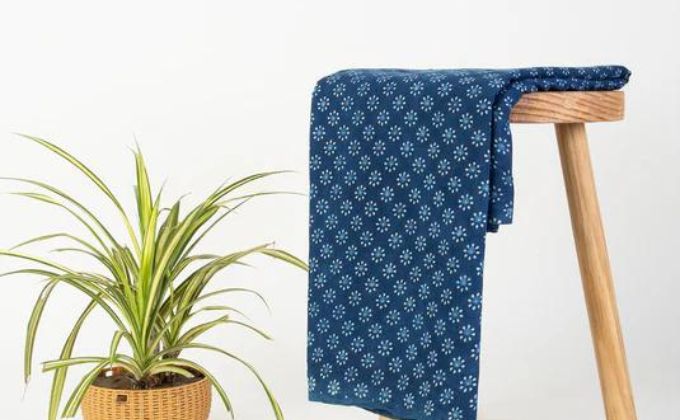Indigo fabric, with its deep, rich blue hues, has long been revered as a timeless textile that blends art, tradition, and craftsmanship. Rooted in centuries of history, indigo dyeing has been practiced across the world, from India to Japan, and its enduring appeal continues to inspire fashion designers, artisans, and home décor enthusiasts. Indigo fabric’s unique color, eco-friendly properties, and connection to traditional craftsmanship have truly captured the hearts of many, making it one of the most cherished fabrics today.
1. The Origins of Indigo Dye
The use of indigo dye dates back over 4,000 years, with evidence of indigo-dyed textiles found in ancient civilizations such as Egypt, Mesopotamia, and India. The dye itself is extracted from the leaves of the indigo plant (Indigofera tinctoria), which grows in tropical regions. Known for its vibrant and lasting blue pigment, indigo was historically a highly sought-after commodity, often referred to as "blue gold" because of its rarity and the complex process required to produce the dye.
In India, where indigo dyeing has deep cultural significance, artisans have perfected the process over centuries. The dye was traditionally used for clothing and textiles worn by royalty, priests, and warriors, symbolizing power and prestige. It wasn’t long before indigo fabric gained international fame, exported along trade routes and inspiring cultures across the globe.
2. The Art of Indigo Dyeing
The process of creating indigo fabric is a delicate art that requires skill, patience, and knowledge passed down through generations. Unlike many other dyes, indigo requires fermentation to release the blue pigment from the plant. Artisans begin by soaking the leaves in water and allowing them to ferment, which produces a yellow-green dye. Fabrics are then dipped into the dye and exposed to air, where the magic happens — the yellow fabric turns blue as it oxidizes.
One of the unique aspects of indigo dyeing is the multiple dips required to achieve deeper shades of blue. Each dip darkens the fabric, allowing artisans to create a variety of tones, from light sky blue to deep navy. Traditional dyeing methods such as resist dyeing, shibori, and block printing are often incorporated, adding intricate patterns and textures to the fabric.
3. Why Indigo Fabric Is So Beloved
Indigo fabric has captured the hearts of many for several reasons, both practical and aesthetic. First and foremost, indigo fabric is known for its durability. The natural dye binds well to the fibers, making the color resistant to fading even after multiple washes. This longevity makes indigo fabric ideal for everyday use in fashion, home décor, and accessories.
Additionally, the aesthetic appeal of indigo fabric is undeniable. The deep, rich blue hue is both calming and captivating, and it pairs well with a variety of styles, from traditional to modern. Indigo-dyed garments, including scarves, shirts, and dresses, remain in demand for their timeless look and unique artistry.
Beyond fashion, indigo fabric is also used to create beautiful home décor items such as curtains, cushion covers, and tablecloths. These pieces add a touch of elegance and artistic flair to any space, making indigo fabric a versatile choice for both personal and interior design.
4. Sustainability and the Revival of Indigo
In recent years, indigo fabric has seen a revival due to its eco-friendly qualities. As consumers become more conscious of the environmental impact of synthetic dyes, natural indigo dyeing has made a comeback. Indigo is a plant-based dye, meaning it is biodegradable and less harmful to the environment compared to chemical alternatives. Artisans who use natural indigo also prioritize sustainable practices, from organic farming of indigo plants to water-efficient dyeing processes.
Supporting indigo artisans also contributes to preserving traditional craftsmanship and empowering local communities. Many indigo artisans are part of cooperatives that ensure fair wages and ethical production, helping to keep this ancient art alive.
Conclusion
Indigo fabric, with its rich history, intricate artistry, and enduring appeal, remains one of the most beloved fabrics in the world. Its deep blue hues, coupled with the sustainable, hand-dyeing process, make it a cherished material for fashion, home décor, and artistic expression. Whether worn as a garment or used to decorate a home, indigo fabric continues to capture hearts with its timeless beauty and cultural significance.





Comments